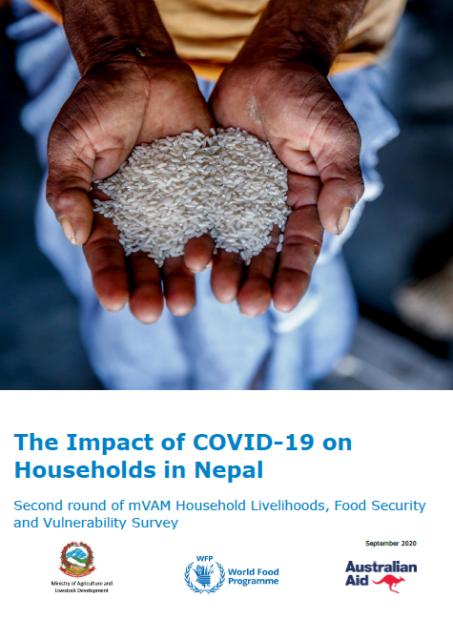COVID-19 crisis causes inadequate food consumption and food insufficiency among households in Nepal

WFP in cooperation with the Ministry of Agriculture and Livestock Development has published a survey report on the Impact of COVID-19 on Households in Nepal. This is the second round of the mVAM Household Survey conducted in August 2020. First round of the survey was conducted in April 2020. The survey report reveals that food insecurity across the country has decreased slightly compared to April 2020; however it remains higher than 4 years ago. According to the report 20.2 percent of the households had inadequate food consumption and 4.7 percent of households had poor dietary diversity. Overall, 11.8 percent of households adopted at least one negative coping strategy to address food shortages and about 6.7 percent of households reported that the food they had in stock was insufficient to meet their needs.
As per the report, in the first round of mVAM Household Survey conducted in April 2020, 23.2 percent of households had inadequate diet. Similarly, 7.2 percent of households had poor dietary diversity and around 45.9 percent of children between 6-23 months of age did not meet minimum dietary diversity in April.
Survey findings reveal that Sudurpaschim and Karnali provinces have the highest proportion of food insecure households, with 23.8 and 23.3 percent households consuming inadequate diet respectively. Similarly, inadequate food consumption was also relatively high in Province 2, 22.1 percent.
Report reveals that the COVID-19 crisis has continued to negatively impact livelihoods of Nepalese households, with 11 percent of households reporting job loss and 31.2 percent a reduction in income. Income reduction was the highest in Province 1 (40.5%), followed by Sudurpaschim (38.8%) and Province 2 (38.3%).
Overall, job loss and income reduction caused by the COVID-19 crisis affected household food security: inadequate food consumption and food insufficiency were more common among households that reported job loss and income reduction, compared to households that did not experience job loss and income reduction.
More than 20 percent of the respondents of the survey said that increase in food price were their major concern during the COVID-19 crisis, followed by shortage of food (16.3%), reduction in income (15.5%) and lack of work opportunities (14.8%).
The second round of the nation-wide household survey of its kind confirms continued pressure on food security, livelihoods and incomes of Nepalese households.
